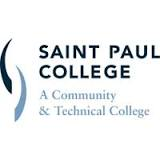What do they do?
Lay out, machine, fit, and assemble castings and parts to metal or plastic foundry patterns, core boxes, or match plates.
Also known as:
Die Cast Die Maker, Fixture Builder, Layout Technician, Metal Pattern Maker, Pattern Maker, Pattern Maker Programmer, Pattern Repair Person, Pattern Worker, Patternmaker, Wax Molder
-
-6.5%
Change
Ranks #11 in job growth rate20Job Openings
Ranks #2 in net job growth
Looking for colleges that offer a specific major? Use the College Match Tool to find your best-matched schools and discover your estimated Net Price!
- High school diploma equivalent (41%)
- Some college, no degree (26%)
- Associate's degree (13%)
- Less than high school diploma (13%)
- Bachelor's degree (6%)
- Master's degree (1%)
- Doctorate or Professional Degree (<1%)
People in this career often know a lot about:
- Production and Processing - Knowledge of raw materials, production processes, quality control, costs, and other techniques for maximizing the effective manufacture and distribution of goods.
- Mechanical - Knowledge of machines and tools, including their designs, uses, repair, and maintenance.
- Mathematics - Knowledge of arithmetic, algebra, geometry, calculus, statistics, and their applications.
- Design - Knowledge of design techniques, tools, and principles involved in production of precision technical plans, blueprints, drawings, and models.
People in this career often do these activities:
- Program equipment to perform production tasks.
- Measure dimensions of completed products or workpieces to verify conformance to specifications.
- Operate grinding equipment.
- Design templates or patterns.
- Repair templates, patterns, or molds.
- Operate welding equipment.
- Construct patterns, templates, or other work aids.
- Review blueprints or other instructions to determine operational methods or sequences.
- Calculate dimensions of workpieces, products, or equipment.
- Plan production or operational procedures or sequences.
- Clean workpieces or finished products.
- Smooth metal surfaces or edges.
- Mark products, workpieces, or equipment with identifying information.
- Draw guide lines or markings on materials or workpieces using patterns or other references.
- Apply protective or decorative finishes to workpieces or products.
- Select production input materials.
- Apply solutions to production equipment.
This page includes data from:

 Occupation statistics: USDOL U.S. Bureau of Labor Statistics Occupational Employment Statistics
Occupation statistics: USDOL U.S. Bureau of Labor Statistics Occupational Employment Statistics








